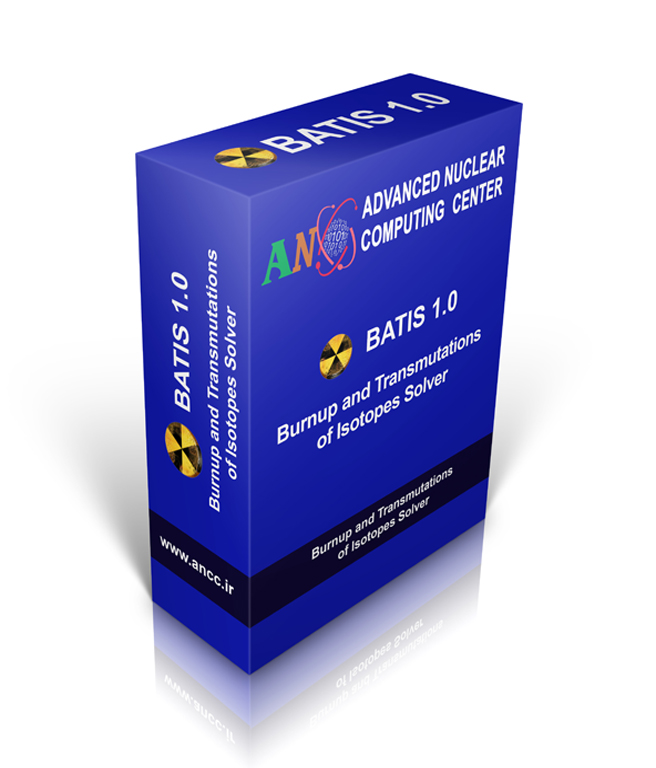
BATIS1.0
Burn-up And Transmutations of Isotopes Solver
INTRODUCTION
The composition of the nuclear fuel and other materials changes under neutron irradiation causing some modifications in core parameters. Some nuclides are annihilated and some are produced many of which are sources of various radiations. A precise prediction of reactor neutronic and thermal-hydraulic behavior during operation is an essential part of the reactor core analysis which needs a precise calculation of changes in the nuclides inventory. Further, there are many applications such as shield design, nuclear waste management and chemical reprocessing of materials in which the changes in the inventory of isotopes has to be analyzed out of a reactor core. The field in which the composition of materials under irradiation or radioactive decay is focused is usually referred to as depletion calculations.
BATIS is an advanced and multi-objective code that calculates Isotopes transmutations due to neutron-matter interactions and radioactive decay. It was first released in September 2020 (version 1.0). BATIS1.0 has been verified against analytical solutions and outputs of ORIGEN2.1, CINDER, and MCNPX2.7e and has been validated using various experimental benchmarks for fuel composition and decay heat of PWR and VVER reactors. Good agreements are found in almost all cases of verification and validation.
Future developments mainly contain variable cross-sections treatment during burn-up, self-adaptive time steps, search option for the estimation of critical Boron concentration, ability to continue corrupted runs, resolving found bugs, and improving the user experience.
METHODOLOGY
The isotope transitions are usually demonstrated by burn-up chains. A simplified one is illustrated below.
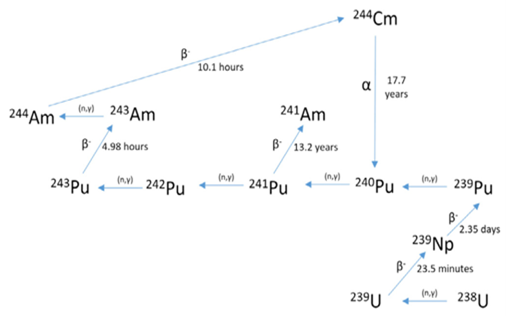
If it be assumed that all nuclear transitions in a system are only due to radioactive decays and neutron-material interactions (which is a fair assumption for most common nuclear reactors), the density change rate for a typical nuclide i can be expressed as:
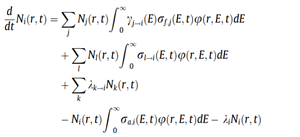
where Ni is the atom density of nuclide i, γj→i is the fission yield of nuclide i from fissile nuclide j whose fission cross-section is σf,j, σa,I is the absorption cross-section of nuclide i, σl→i is any neutron cross-section of nuclide l leading to the production of nuclide i except fission, λk→i is any decay constant of nuclide k leading to the production of nuclide i and λi is the total decay constant of nuclide i.
By discretizing the time, space, and energy domains, a system of Ordinary Differential Equations (ODE) is constructed for each region in the space. Various numerical methods listed below have been implemented in the BATIS code to solve the depletion equations:
- Euler (Explicit and Implicit);
- Runge-Kutta fourth order;
- Krylov subspace;
- Markov chain (TTA);
- MATREX (applied in ORIGEN);
- Taylor expansion;
- Padé approximation;
- MiniMax approximation, and
- Chebyshev Rational Approximation Method (CRAM)
The last method (CRAM) proved to be the most stable one which BATIS1.0 benefits from.
BATIS1.0 could be run in two main modes: point and coupled. In the point depletion, the geometry has no role in the problem definition and the materials are assumed as homogeneous, i.e. the neutron spectrum and scalar flux, power density, and composition are assumed constant in the whole material. In the other case, the depletion calculation is coupled with the Monte Carlo transport calculation of the MCNP code whose role is to estimate the reaction rate distribution over the problem geometry. In this case, the geometry is divided into a number of cells, each of which contains a homogenous material. At the beginning of each time step, the reaction rates are calculated by the MCNP and assumed constant during that step. Then the depletion calculation is performed and the modified compositions of each cell are obtained and updated in the MCNP input. This coupling scheme is continued for each time step in a fully automated manner by the BATIS code.
FEATURES
The major capabilities of BATIS1.0 are listed below:
- Supporting two basic modes of point depletion and coupled with the MCNP
- Supporting both ORIGEN2 one-group and CINDER 63-group libraries;
- Designing preprocessed binary libraries for working in a more effective and faster manner;
- Supporting three irradiation modes of constant power, constant flux, and decay;
- Applying various effective numerical methods;
- Ability to run in either text mode or graphical mode, and
- Various practical outputs in the form of tables and figures.
In the point depletion mode, the main code inputs are as follows:
- Burn-up library
- Material initial composition
- Time steps
- Power/flux level in each step
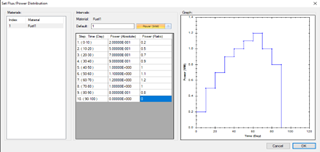
In coupled with the MCNP mode, instead of the second item (Material initial composition), the paths of the MCNP executive files and input are taken. First of all, BATIS1.0 executes the MCNP in an input process mode and reads the materials and cells containing them in the MCNP input file. The user can limit depletion calculations to some materials in the MCNP input and assume other materials composition to be constant. The materials for which depletion calculations are performed are called burnable materials.
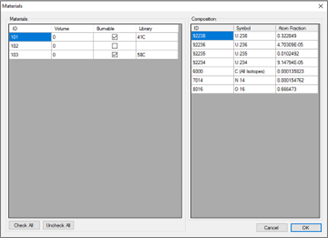
It is also possible for a user to change the composition of any burnable material at the beginning of any time step manually. In the case of repeated structures in the MCNP input, the user has to enter the volume of each burnable material in BATIS1.0.

It is also possible for the user to select some nuclides in various burnable materials to calculate their microscopic reaction cross-sections via continuous energy cross-sections of MCNP (ACE formats) instead of approximated constant values in the burn-up library. The user can also introduce the path of MPI (Message Passing Interface) software to run the MCNP executive file in parallel mode to expedite calculations.
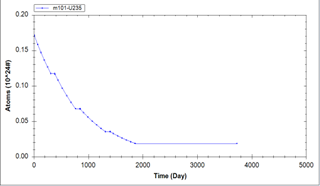
APPLICATIONS
BATIS1.0 covers a wide range of needs for students, researchers, and engineers for various purposes, most important of which are mentioned below:
- Design and calculation of core operating cycles in the coupled mode. The user can also insert any tallies in the MCNP input to calculate any interested parameters at specified time steps. BATIS1.0 saves all the MCNP outputs for complementary purposes.
- Verification and validation of diffusion-based core calculation codes.
- Estimating how long the fuel assemblies have to remain in the spent fuel pool to fulfill the obligations and standards.
- Estimating the source term to design transport and storage casks of spent fuels.
- Estimating the source term in the nuclear accident simulations.
- Estimating the criticality of spent fuels in the spent fuel pools and transport and storage casks.
- Estimating the material inventories for chemical reprocessing operations.

